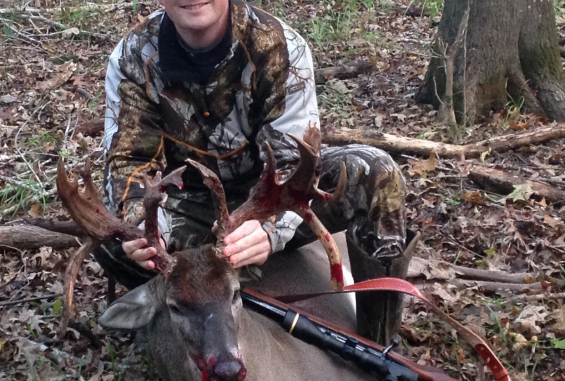
But number of deer hunters increasing in Louisiana
Editor’s Note: Last week, Scott Durham with the Louisiana Department of Wildlife and Fisheries, discussed the overall status of the state’s deer herd. Here’s the second story from that interview, detailing this year’s mast crop and the overall health of the herd.
Based on the number of tags issued by the Louisiana Department of Wildlife and Fisheries, more hunters across the state are venturing out in pursuit of deer.
Scott Durham, the state’s deer study leader, said the increase in hunters here is bucking a downward trend in some areas.
“We’re issuing more tags, which is a great thing for our state,” Durham said. “We seem to be increasing in hunters, versus trends nationwide where there are some declines.”
According to the 2013-14 Louisiana Deer Report released in August, more than 270,000 tags were issued last year, an increase of almost 11,000 tags from 2012-13.
“The number of tags we’re issuing, which includes some turkey hunters that don’t hunt deer, is very stable, if not increasing,” he said. “So that’s a good thing.”
More hunters might be heading into the woods in pursuit of the state’s estimated 500,000 deer, but this season might face another off mast crop, he said.
“Preliminary reports are light,” he said. “It was a low number last year, and at least where I’ve done my survey, it was light again, at least on the red and white oak grouping.”
But Durham said his survey included only a small sample, and the annual statewide mast crop survey is just getting underway with the Louisiana Department of Wildlife and Fisheries.
Often, he said there seems to be no rhyme or reason to spring and winter weather with mast crop production.
“I don’t know if we know what it has to do with,” he said. “It’s definitely related to late freezes. If you get super-cold weather on new acorn growth, that can knock them out. But we’ve actually seen some of our highest mast surveys following a drought year…”
Even a hard spring rain on the flowers of acorns can be detrimental to production in the fall, he said.
“It all depends on what’s happening with those oak flowers and the pollination and once the fruit sets,” he said. “It’s hard to tie rainfall or weather patterns to mast crops.”
And despite great disparities between the estimated number of deer harvested through the department’s annual mail survey and the number of tags hunters call in, Durham said blanket statements about the statewide harvest aren’t as applicable as in years past.
“There was a time when guys in my position were really preaching a lot of either-sex harvest, killing lots of females to reduce deer numbers,” he said. “We’ve come to a new place in the state. There’s certainly areas where that’s still occurring, but there are plenty of areas now where deer densities are not as high as they used to be where the sex ratios are better.
“I don’t think you can just say across the state we need to kill more deer. I think you have to take every place individually, look at the habitat conditions, look at the browse availability and look at the pressure on the browse. So the decisions have to be made more on a tract-specific or regional-habitat-specific basis, and that requires going out and doing some measuring and keeping some observation logs, doing camera surveys, looking at fawn-to-doe ratios and buck-to-doe ratios.”
As a whole, the health of Louisiana’s herd, especially as it relates to hemorrhagic disease, is good, he said.
“This year’s looking very normal,” Durham said. “There’s not a lot of dead deer popping up across the landscape. But this is the time when we start seeing dead deer. Some can die quickly from the disease, others can pick up the chronic form and it’s a stressor on them.”
Although they are still good to eat, Durham said hunters can tell if deer likely contracted the virus if their hooves are sloughing.
“Flaking or rough hoof marks on their feet indicates the deer were exposed to the chronic form of EHD (Epizootic Hemorrhagic Disease) or blue tongue. They can always check that,” he said. “The only deer you don’t want to eat is a deer that’s obviously emaciated — deer where ribs are showing or their backbone is sticking up.
“Those are usually HD deer, too. You wouldn’t want to eat a deer in that bad a shape.”


